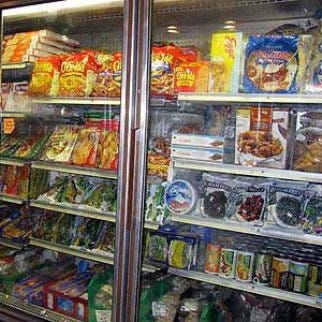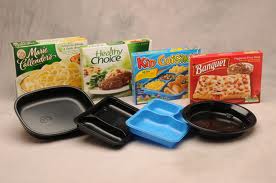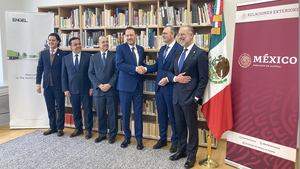Fighting food waste with frozen food packaging
The world suffers from a food waste problem. In a world of seven billion people, set to grow to nine billion by 2050, about one-third of all food produced, worth around $1 trillion, gets lost or wasted in food production and consumption systems, according to data released by the Food and Agriculture Organization (FAO) of the United Nations.
March 18, 2013
The world suffers from a food waste problem. In a world of seven billion people, set to grow to nine billion by 2050, about one-third of all food produced, worth around $1 trillion, gets lost or wasted in food production and consumption systems, according to data released by the Food and Agriculture Organization (FAO) of the United Nations.
My recent feature on PlasticsToday took a closer look at the opportunity for the packaging industry to help with the problem involving food waste. There's constant innovation in the field from smart packaging to hot fill plastics, and according to the American Chemistry Council (ACC), frozen food packaging can also help reduce food waste.
 This March marks the 30th National Frozen Food Month. ACC's Plastics Make it Possible initiative is honoring innovations in plastics that help deliver frozen foods-particularly those innovations that have led to less packaging and food waste.
This March marks the 30th National Frozen Food Month. ACC's Plastics Make it Possible initiative is honoring innovations in plastics that help deliver frozen foods-particularly those innovations that have led to less packaging and food waste.
The ACC says that frozen food packaging has changed considerably since the 1920s when scientist and inventor Clarence Birdseye, otherwise known as the founder of the modern food industry, developed a way to flash-freeze foods in small packages suitable for retailing. He achieved rapid freezing by placing packaged food between two refrigerated metal plates, according to Biography.
Now a days frozen food is packaged in a variety of materials and plastics are constantly used whether it's for vegetable medleys to ready-to-heat meals to ice cream.
Steve Russell, VP of plastics for the ACC, said that by helping to preserve fresh flavors and nutrients in frozen foods, plastic packaging often leads to less food waste.
"And thin, lightweight plastic packaging also leads to less packaging waste," Russell said in a news release. "So consumers can save more food and grocery money and create less waste."
Some examples of how plastics have contributed to the evolution of frozen foods, according to the ACC:
Freezer-to-Microwave TV Dinners: In the early days of frozen TV dinners, meals could take an hour to heat in
 the oven. But with the advent of the microwave oven, frozen food makers began packaging frozen meals on trays made with plastics that could stand up to both cold and heat. Dinners now can go from freezer to microwave and be prepared in minutes, requiring less preparation time and energy. And a growing number of U.S. communities collect these trays for recycling, resulting in less valuable materials in landfills.
the oven. But with the advent of the microwave oven, frozen food makers began packaging frozen meals on trays made with plastics that could stand up to both cold and heat. Dinners now can go from freezer to microwave and be prepared in minutes, requiring less preparation time and energy. And a growing number of U.S. communities collect these trays for recycling, resulting in less valuable materials in landfills.
Airtight Freezer Foods: Under-protected food stored in the freezer absorbs nasty odors and flavors and then dries out, resulting in "freezer burn" and wasted food. Factory sealed plastic bags and containers help preserve the flavor, texture and nutrients of food by locking out air. So consumers can enjoy nutritious fruits and vegetables year round, buy wild caught salmon from Alaska and find all sorts of prepared meals that were unavailable only a few years ago-packaged in thin, lightweight plastics.
Plastic Steamer Bags: Many frozen food makers now sell a large variety of side and main dishes in lightweight plastic pouches designed for heating in the microwave. Consumers simply place the frozen package in the microwave, and moisture steams the food inside plastic pouch-in one simple step, with less cleanup and little waste. Consumers themselves also can buy similarly designed plastic zipper bags to easily and quickly steam their own meals in the microwave.
"Active" Packaging: Sometimes called "intelligent" or "smart" packaging, active packaging helps protect both fresh and frozen food by doing more than simply containing it. For example, antimicrobials can be incorporated into the plastics used in packaging-this can help mitigate thegrowth ofharmful microorganisms, which helps preserve food quality and results in less spoilage and waste.
Recycled Plastic Packaging: Thanks to new recycling technologies, some frozen food makers are using recycled plastics in their packaging. One major frozen food maker uses plastics from recycled plastic bottles in frozen meal trays for several of its food brands; the company says this diverts an estimated 8 million plastic bottles from landfills annually. And of course these plastic trays are lightweight, which reduces fuel consumption in transport.
Do-it-Yourself Frozen Foods: Today's consumers can place homemade meals, store-bought foods and leftovers in zipper bags and purge much of the air before freezing (pre-wrapping foods in plastic stretch wrap also helps). To take this concept even further, home vacuum sealers remove nearly all air from the plastic bag prior to sealing, which better protects food to reduce waste. Home vacuum sealing with plastics has grown considerably in recent years-it's particularly popular with warehouse store shoppers and game hunters.
It's clear that packaging has a critical role to play in protecting food by keeping it fresh and preventing it from becoming waste. What are your thoughts on this subject? Be sure to tell us about any packaging innovation that is working to combat the food waste problem.
About the Author(s)
You May Also Like


